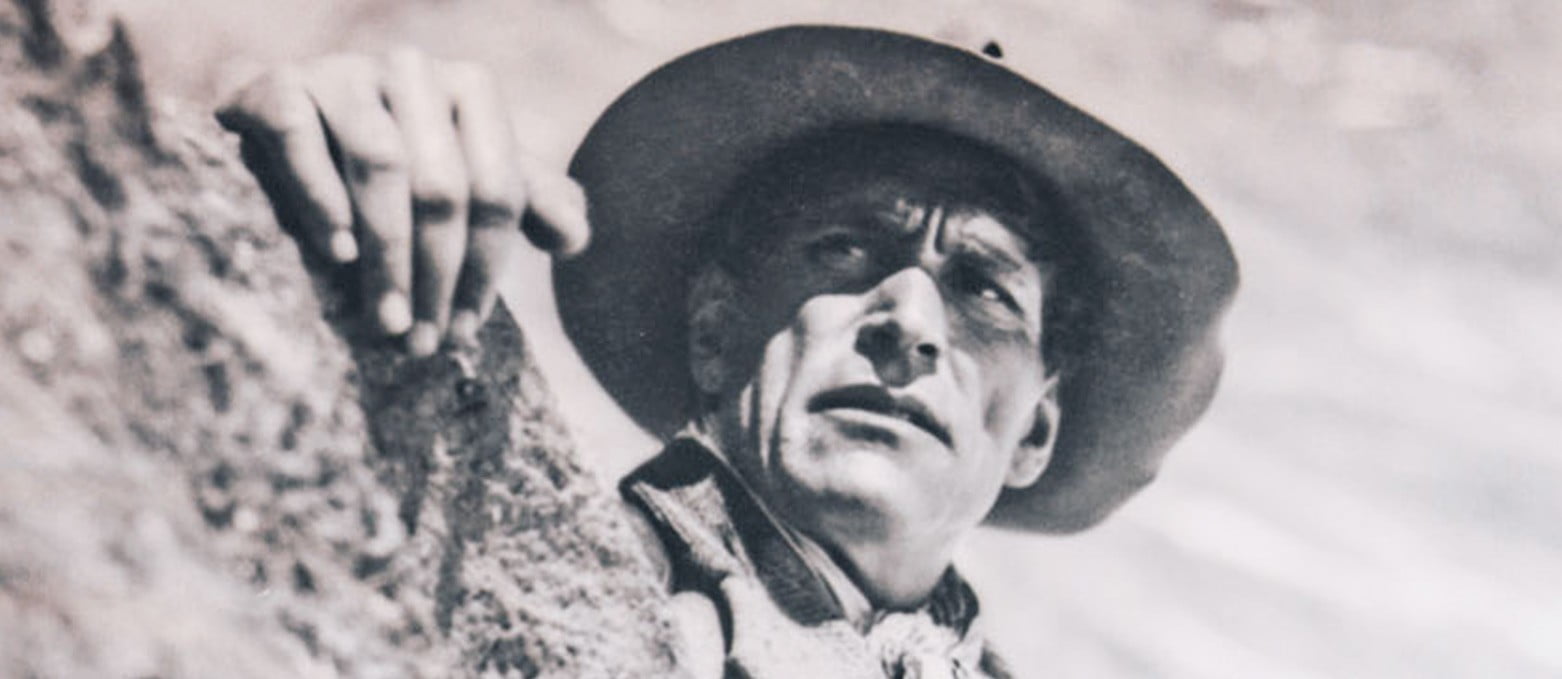
First, to Urtijëi. Hannes Rabanser, Tyrolean hotelier, and Luis Trenker (1892-1990), who could be his great-grandfather, both come from the same village in Val Gardena. Then to the Seiser Alm, where Hotel Tirler is located and where Luis Trenker shot scenes from his film “The Prodigal Son” (1934). Finally, in nature. Trenker, says Hannes Rabanser, loved the mountains. He used his popularity towards the end of his life to protect the Seiser Alm. When it became fashionable in 1995 to wear Trenker, Hannes Rabanser was unstoppable.
The Bolzano fashion label “Luis Trenker” was created shortly after Trenker’s death. Hannes Rabanser was immediately on fire. He wanted to equip all his employees with Luis Trenker clothing. The company was surprised. “We do not do such things,” Hannes was told. So he purposefully navigated through the stores that carried the brand, finding sizes and colors himself. “That was not so easy,” he recalls.
Since 2001, everyone at the Hotel Tirler has been wearing Luis Trenker. The Tirlers are now friends with company boss Michi Klemera. Some rooms have been furnished with the label together, in the restaurant – if you are lucky – you can sit on trenker-branded chairs in the Trenkerstube. When Hannes Rabanser asked his godchild: “Do you know who Luis Trenker was?”, he said confidently: “A fashion designer. ”
Could that happen to you too? The sun mask in the entrance lights up prominently, but it is only known to movie buffs. Hannes Rabanser bought it at an auction. It comes from the movie “The Prodigal Son,” whose mountain scenes Trenker shot up here near the Tirler. The gold mask is the most important prop in the movie. The story: A young man leaves the mountains, tries his luck in New York and ruefully returns to the mountains. Above all, critics praise the camera work in the film: Trenker’s transition from the South Tyrolean mountains to the skyscrapers in New York went down in film history.
The film came to Trenker in the 1920s, when mountain filmmaker Arnold Fanck lacked an actor with climbing experience and Trenker jumped in. An anecdote says that the young Luis then vehemently resisted having make up put on him in the silent film style. “Climbers are not made up in life,” he allegedly said. And that was it. He was suntanned during his big time as a director and actor during the Nazi era and during the fascist era. His proximity to power makes it difficult for film historians to classify his works. Trenker is considered a mountain film pioneer, who left the studio to shoot directly on the mountain, and included the mountains directly in the plot. He is recognized for his flair for screenplay, melodrama and spectacular shots. His political position during the era of dictators is largely described as oppurtunistic, and his memoirs are considered brilliant storytelling.
At the Tirler, Luis Trenker is bestowed the home bonus. “When Trenker died, there was no mountain, no path, no hill was reminiscent of him,” says hotelier Hannes Rabanser. He wanted to make up for that at the Tirler. Trenker now sits in front of the hotel as a life-size bronze statue in narrative pose. Movie posters and scene photos in the hotel are reminiscent of the time when South Tyrol was closer to Hollywood than ever.
If you look closely, you’ll discover two mountain paintings in the restaurant that Trenker painted. Next to it is a photo showing Trenker with a brush and easel. Hannes Rabanser bought the picture from the society photographer Francesca Witzmann. She put the money in an envelope. “Here it will stay. Reserved for those moments when I’m going to eat with friends at the Tirler,” she said, and has been coming every year since then.
So we’re only missing only a personal dedication from Luis Trenker. But there is one. On a postcard from June 22, 1975. Trenker thanks Hannes Rabanser’s mother. If you discover this between all the pictures here, then we’ve done it: you are infected by the Trenker fever.





